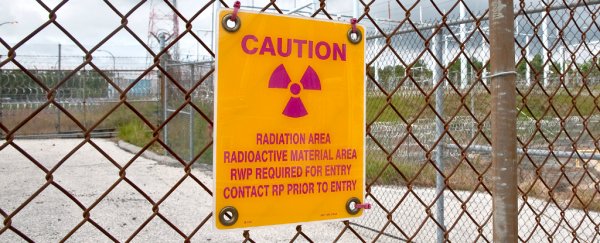We all know that radiation can be deadly in large doses, but for many people, there's a constant fear about about radiation exposure, and how that might be affecting their health.
And, sure, to an extent, it's a good thing to be wary of ionising radiation, which can trigger changes in our DNA. But what many people don't realise is that all of us are exposed to radiation on a day-to-day basis from some surprising sources - and the large majority of the time it's nothing to worry about, as this animation reveals.
Produced by Alex Kuzoian for Business Insider, the video compares some of the common sources of radiation in our everyday life. And there are some surprises in there. For example, living within 80 km (50 miles) of a nuclear power plant exposes you to less radiation than an airport scanner, or a banana. Seriously.
And although a lot of people get worried about exposure during X-rays, that's nothing compared to the amount of radiation you'll experience during a flight from NYC to Los Angeles. What tops the everyday items in terms of radiation exposure? We don't want to give it away, but let's just say you might want to quit smoking right about now.
So why is all this radiation around us all the time? To start with, we're constantly being bombarded with radiation from space. Our magnetic field blocks most of it, but a small amount of cosmic rays still get into our atmosphere. On top of that, some rocks, soil, and plants are all naturally a little bit radioactive.
In fact, thanks to our environment here on Earth, we're all being exposed to around 0.1 to 0.2 microsieverts of background radiation per hour, and that's totally fine (to put that into perspective, it would take around 4 sieverts, or 400,000 microsieverts, of ionising radiation in a short amount of time to kill you).
But why the bananas? It turns out they contain potassium, which is great for you, but can also be be very slightly radioactive. So that means they can expose us to an additional (but inconsequential) 0.1 microsieverts. A dental X-ray, by comparison, emits around 5 microsieverts.
For those of you who are now throwing out all your bananas and cancelling your next dentist check-up, don't. Instead of being worried about all these newfound sources of radiation in our life, it's important to put the risk into perspective, which is what this animation does so well.
And in case you've ever wondered what the most radioactive place on Earth is, it's definitely not Chernobyl:

